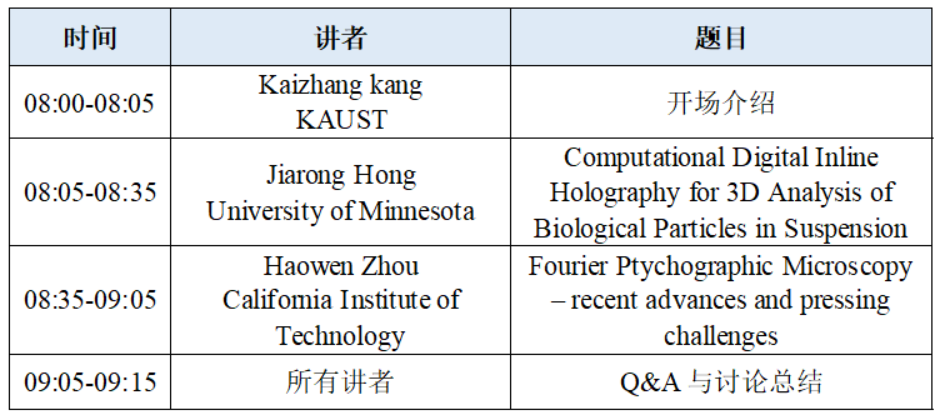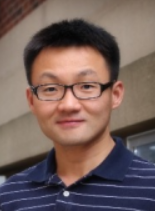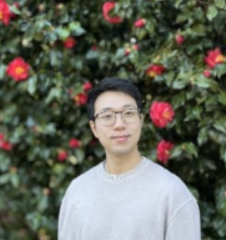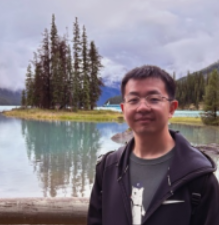CSIG图像图形技术国际在线研讨会第15期(显微成像专题)将于11月6日举办
实现具有大视场、高时空分辨率及三维信息获取能力的显微成像技术,对于揭示生命过程、理解疾病机理以及推动新型生物材料研究具有重要意义。近年来,计算成像通过融合光学、算法与人工智能的创新思路,突破传统光学显微镜的物理极限,使显微成像在分辨率、速度和信息维度上取得显著提升,推动了这一领域的快速发展与应用落地。
围绕这一主题,中国图象图形学学会(CSIG)将于2025年11月6日(周四)08:00-09:15举办CSIG图像图形技术国际在线研讨会第十五期(显微成像专题)。会议邀请了来自美国的2位国际知名学者来介绍显微成像的最新研究成果,并围绕该领域当下挑战及未来趋势开展讨论。期待学术与工业界同行的积极参与!
组织机构
主办单位:中国图象图形学学会(CSIG)
承办单位:CSIG国际合作与交流工作委员会
日程安排
2025年11月6日(周四)8:00-09:15
欢迎关注CSIG官方视频号,观看直播

会议日程

讲者简介

Jiarong Hong
University of Minnesota
Jiarong Hong is a professor in the departments of Mechanical Engineering, Electrical and Computer Engineering, and the Saint Anthony Falls Laboratory at the University of Minnesota. He is also the Chief Technology Officer of Astrin Biosciences, Inc., a tech startup focused on providing personalized cancer diagnostics and treatment solutions, and the founder of another startup, Particle4X, Inc., specialized in developing cutting-edge particle diagnostic techniques for various applications. He received his B.S. from the University of Science and Technology of China in 2005 and his M.S. and Ph.D. from Johns Hopkins University in 2008 and 2011, respectively. After starting his academic career at the University of Minnesota in 2012, he has focused on developing novel flow imaging techniques, known as flowscopes, which allow for the observation of flow and particle movements within the flow at unprecedented spatial and temporal resolutions across a broad range of disciplines. With these techniques, his work addresses challenging fundamental questions in fluid dynamics and enables research in fields such as oceanography, agriculture, robotics and sensing, microbiology, medical sciences, and material sciences. He has published more than 120 journal papers and has 17 international and US patents. Hong is a recipient of several awards, including the National Science Foundation CAREER Award, Office of Naval Research Young Investigator Award, and McKnight Land-grant Professorship from the University of Minnesota. His research on wind energy, supercavitation, snow settling, drone-based wildfire characterization and monitoring, harmful algal bloom detection, Covid-19 transmission, and cancer diagnostics has been widely covered by international media and featured in TV programs.
Talk title: Computational Digital Inline Holography for 3D Analysis of Biological Particles in Suspension
Abstract: While most biological microscopy targets adherent cells and tissues, many biologically and clinically relevant entities—bacteria, algae, and mammalian cells—exist as discrete, motile particles in suspension governed by surrounding flow. Quantifying their three-dimensional positions, shapes, and trajectories in situ remains a core challenge. I will present advances in digital inline holography (DIH), a compact, low-cost computational microscopy method that reconstructs volumetric particle fields from single-shot holograms. Physics-informed reconstruction and learning-based analysis improve spatial resolution, dynamic range, and throughput while remaining robust in scattering, high-concentration, real-world settings. We measure flow fields around swimming microorganisms, track 3D locomotion of biofuel-producing algae and biofilm-forming bacteria, and characterize suspended cells and subcellular particles, including detecting bacteria in sterile liquids and identifying circulating tumor cells. Together, these results establish DIH as a scalable, label-free, in-flow platform for 3D biological-particle analysis, bridging fluid dynamics, microbiology, and biomedical sensing.

Haowen Zhou
California Institute of Technology
Haowen Zhou is a Ph.D. candidate at Department of Electrical Engineering in California Institute of Technology, advised by professor Changhuei Yang. His research focuses on computational microscopy for 2D and 3D imaging, with broad applications in biological and clinical sciences. Haowen received his B.S. degree in Optical Engineering from Huazhong University of Science and Technology, China in 2019, an M.S. degree in Electro-Optics from University of Dayton in 2021, and an M.S. degree in Electrical Engineering from California Institute of Technology in 2024. He served as 18 journal reviewers including Nature Communications, Optica, Advanced Photonics, Light: Science and Applications, etc. He is a Gupta Sensing to Intelligence fellow, a 2024 SPIE Optics and Photonics Education Fellow, and a Schmidt Graduate Research Fellow.
Talk title: Fourier Ptychographic Microscopy – recent advances and pressing challenges
Abstract: Over the past century, microscopy has evolved significantly through advances in optical design. However, pushing the boundaries of imaging performance using purely optical and mechanical innovations has become increasingly challenging. Meanwhile, the rapid growth in computational power has transformed the way we process and analyze image data, enabling a paradigm shift in microscopy. By offloading complexity from hardware to algorithms, Fourier ptychographic microscopy (FPM)—a rising computational imaging technique—offers a powerful approach to simplify system design, correct aberrations, and extract more information from data. In this talk, I will briefly cover the concept of FPM, introduce its recent advances in 2D/3D imaging, AI-integrated methods, and analytic solutions, and discuss the future development of the technique.
主持人简介

Kaizhang Kang
King Abdullah University of Science and Technology
Meng Zhang is an Associate Professor at Nanjing University of Science and Technology, China. Before that, she spent three years working as a Postdoc Researcher, at UCL, UK. She received her Ph.D. from department of computer science and technology, Zhejiang University. Her research interests are in computer graphics, with a recent focus on applying deep learning to dynamic modeling, rendering, and editing. Her work mainly lies in hair modeling, garment simulation and animation.Kaizhang Kang is a postdoctoral researcher at King Abdullah University of Science and Technology (KAUST), working with Professor Wolfgang Heidrich. He received Ph.D. degree from Zhejiang University in 2023 under the supervision of Professor Hongzhi Wu. His research focuses on intelligent computational imaging, based on hardware–software co-design framework. During his Ph.D. studies, he worked on appearance/geometry acquisition and reconstruction, and in postdoctoral research, he broadened research area to microscopy, spectral acquisition, and optically encoded semantic imaging. Across these studies, he developed a series of high-performance imaging hardware systems and proposed efficient, high-quality algorithms to different tasks. His works have been published in SIGGRAPH, SIGGRAPH Asia, ICCV, TVCG, CVPR, and Optics Express. He received Microsoft Research Asia Fellowship in 2021 and serves on the Technical Communications & Posters Committee for SIGGRAPH Asia 2024 and 2025.
Copyright © 2025 中国图象图形学学会 京公网安备 11010802035643号 京ICP备12009057号-1
地址:北京市海淀区中关村东路95号 邮编:100190

